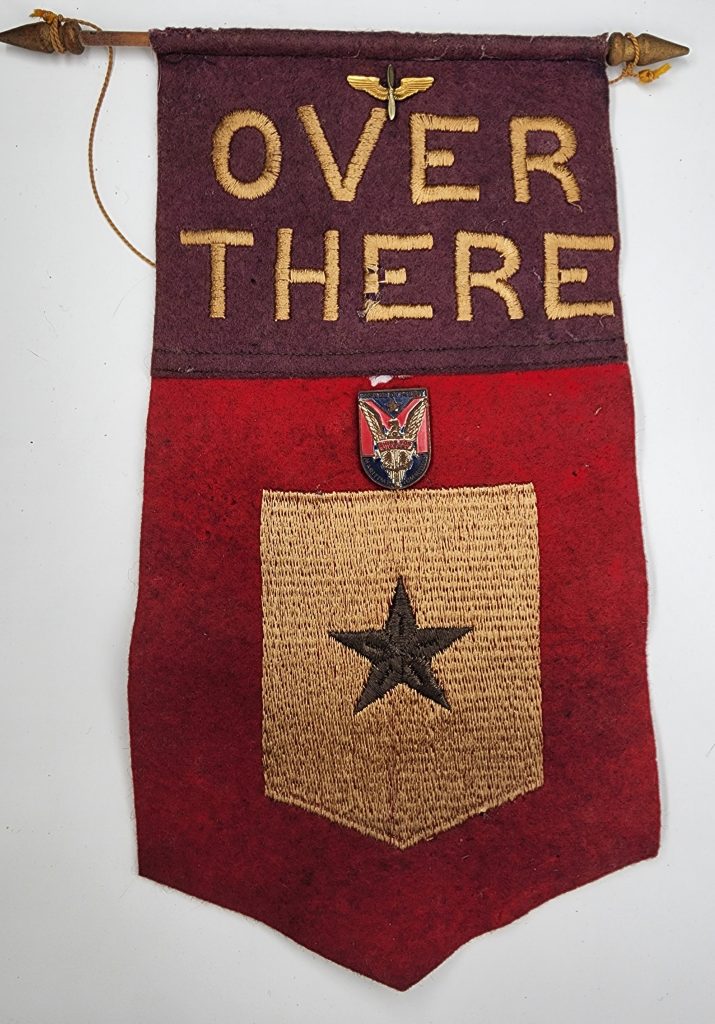Our WWI U.S. Miscellaneous section is filled with special items that don’t fit in the main categories, but are special and definitely need to be seen. We will be rotating items it this section, so please check back often.
U.S. WWI Trench Knife This M1917 fighting knife was designed by Henry Disston & Sons and based on examples of trench knives then in service with the French Army. The M1917 featured a triangular stiletto blade, wooden grip, metal knuckle guard, and a rounded pommel.
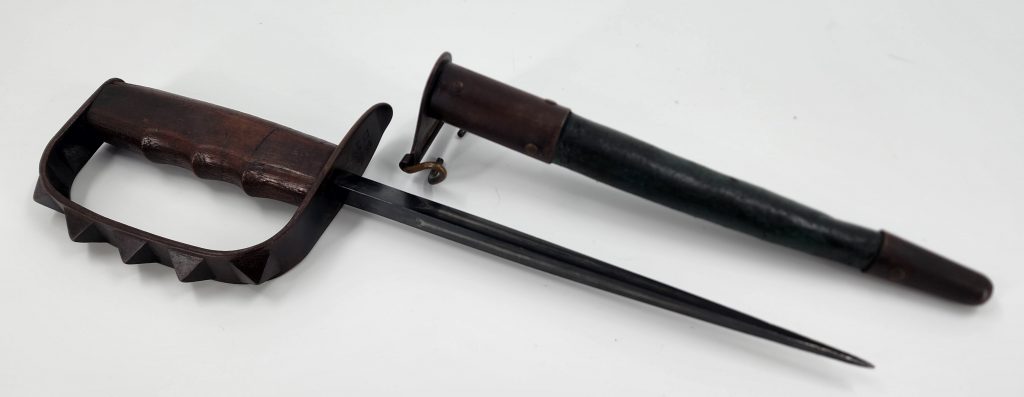
U.S. WWI Trench Watch (wristlet) was a type of watch that came into use by the military during World War I, as pocket watches were not practical in combat. It was a transitional design between pocket watches and wristwatches, incorporating features of both. Our example includes the rare shrapnel guard.

WWI Bond Posters. “Come on! Buy More Liberty Bonds” was one of many bond posters issued by the U.S. government during World War I to encourage support of the war. This poster was created by American artist Walter Whitehead in 1918.
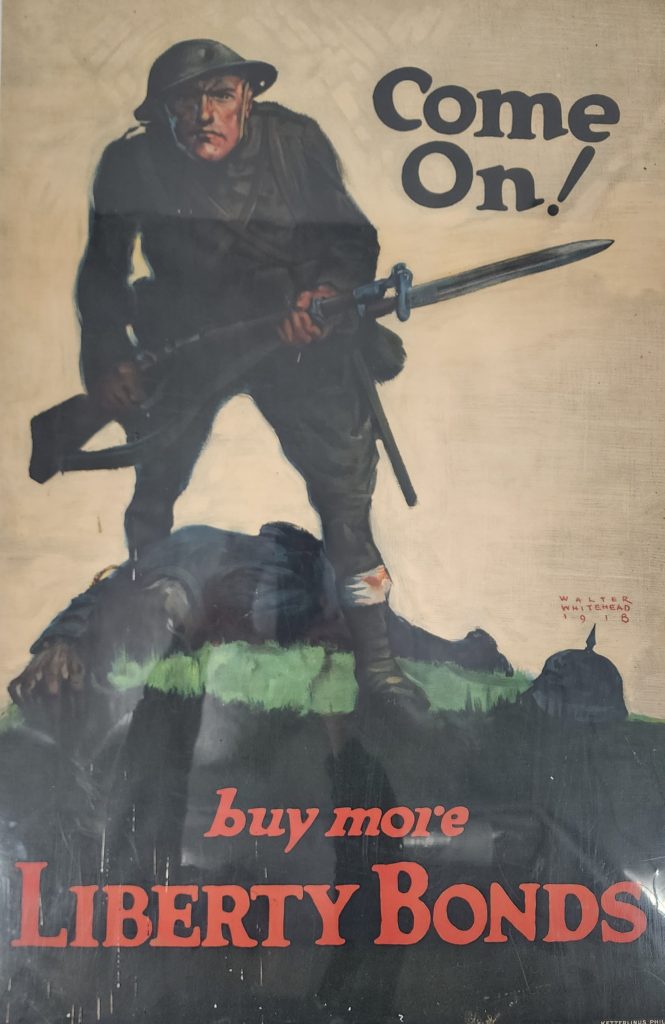
War Souvenirs are as old as warfare itself. Be they trophies of victory or personal keepsakes of combat experiences, soldiers have always saved material evidence of their wartime service. Some, if they had the skills, turned the materials of war into art. The abundance of items created by soldiers in World War I and in the years immediately after gave rise to the term “trench art.” This has Air Service symbols.

U.S. WWI Dog Tag Kit. In 1906 the U.S. Army began issuing pairs of aluminum dog tags. In the event of a soldier’s death, one tag stayed with the body and the second tag was given to the individual in charge of the burial. This Dog Tag Kit was used to replace and repair lost or damaged dog tags. The kit came complete with a brass anvil, hammer, and tin plates.
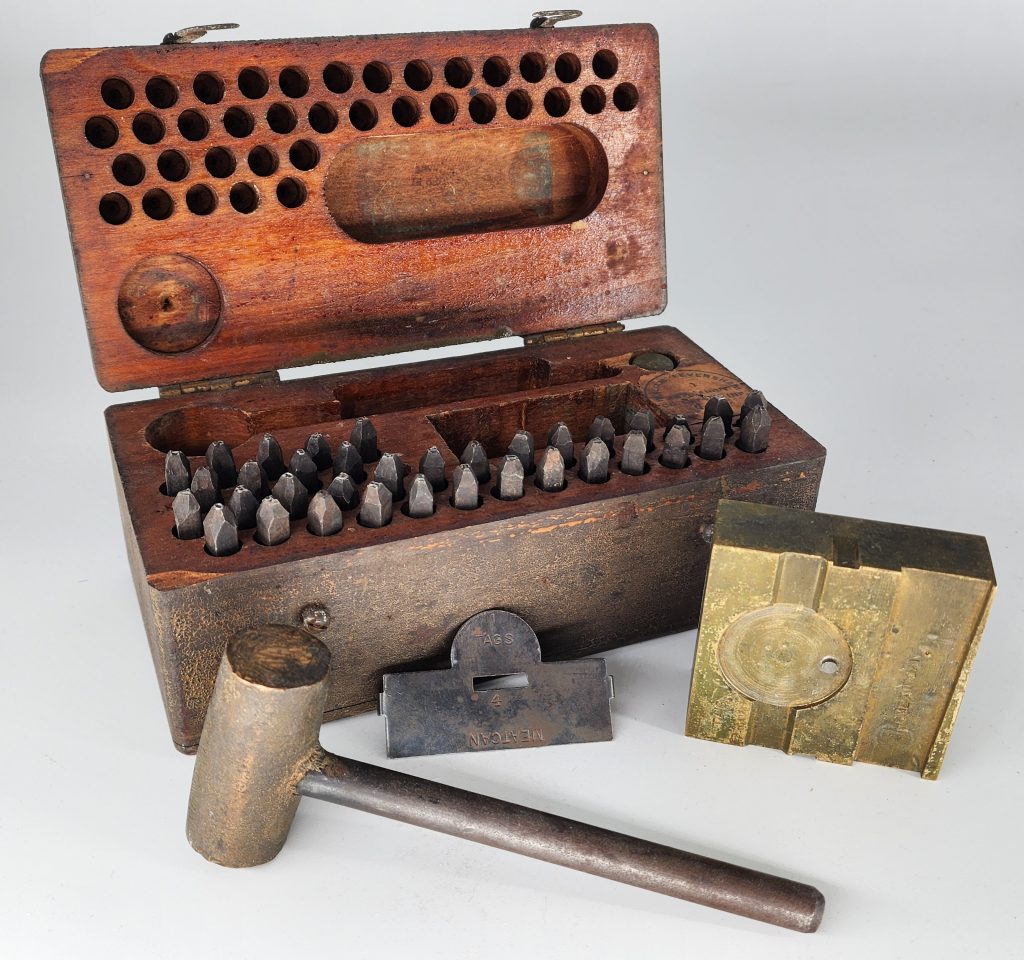
WWI U.S. Service Bugle. Made in Philadelphia and dated 1917.
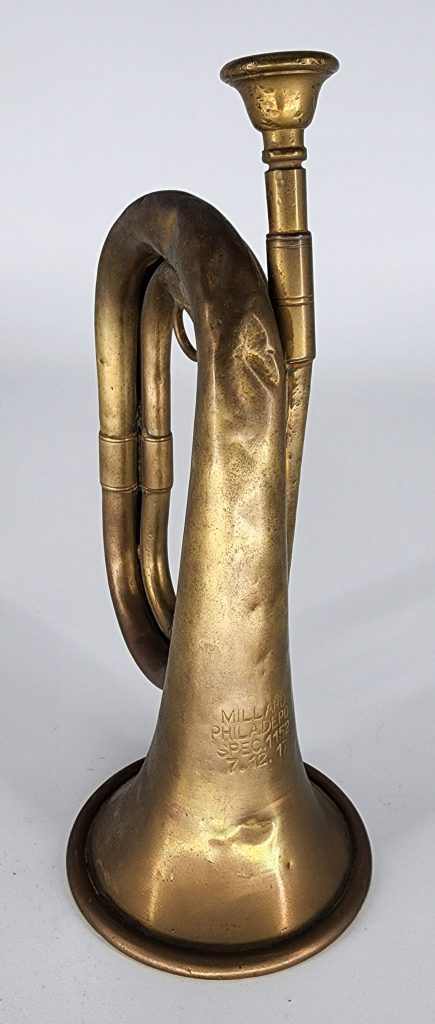
Much honored and decorated General John J. “Black Jack” Pershing led the American forces to victory over Germany as the Commander of the American Expeditionary forces during World War I. General John J. “Black Jack” Pershing still action die-cast iron bank was first issued during WWI and stamped C-1918 on the back, to commemorate General Pershing’s success over the German forces.
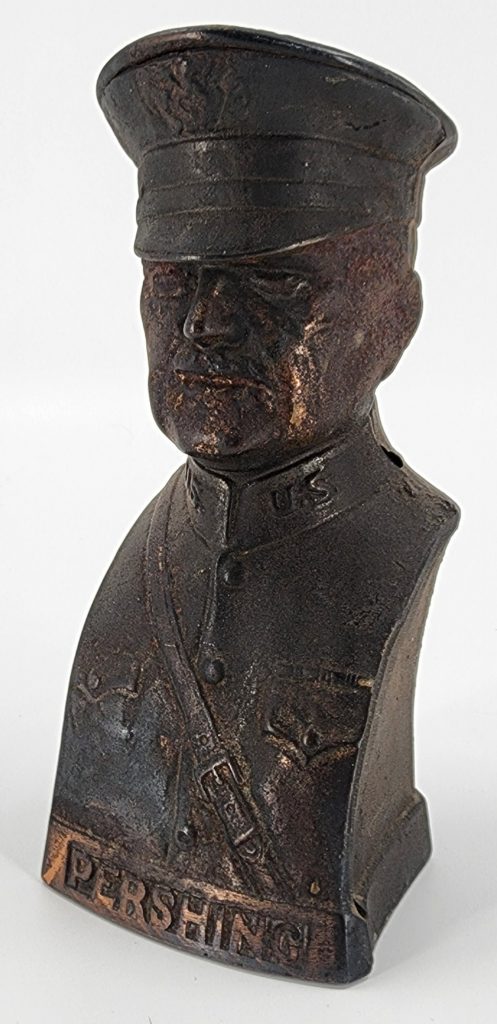
The title to the popular song “Over There,” written by George M. Cohan in April 1917, was incorporated in the designs of some window star flags. Families often displayed these flags in a front window of their home. The number of stars denoted how many sons or loved ones were currently serving “over there” in Europe during World War I. A gold star would represent the family member being killed in action.
